When the VTEC solenoid has gone bad, the first symptom you would see is the engine check light turned on. In this scenario, the vehicle might idle rough.
Plus, you might notice a massive decrease in the fuel economy, or the engine might get heated pretty fast.
Not only are these but there are also some other symptoms of bad VTEC solenoid as well, which we’ve discussed in this very guide.
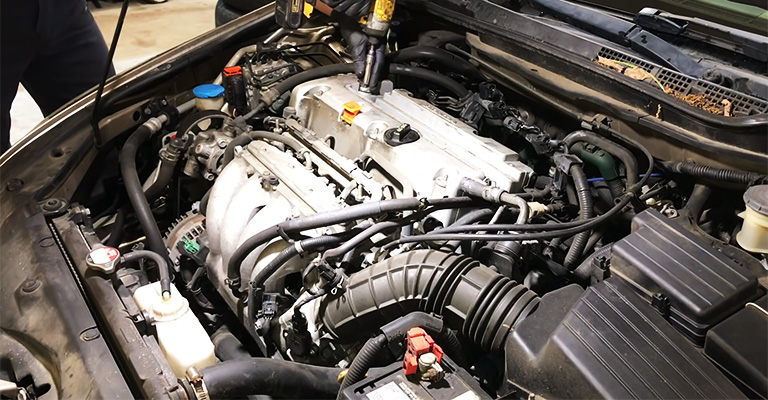
What Are the Symptoms of a Bad VTEC Solenoid?
A bad VTEC solenoid doesn’t show a lot of symptoms; few give a signal that something might be wrong with this. Check them out.
1. Hard Idle
The most common symptom of a failed VTEC solenoid engine is a hard or rough idle. When there is something wrong with the VTEC solenoid, the valve timing won’t be able to advance as it should, which results in rough idle.
You will only notice this issue at low RPM since the VTEC system is only activated when the RPM is low; this problem solves at higher RPM.
Along with hard idle, the acceleration might get weak as well. You might not get the acceleration boost you used to get before.
However, a rough or hard idle can also be a symptom of some other engine issues, such as a bad fuel injector, clogged air filter, faulty spark plug, etc.
2. Poor Fuel Economy
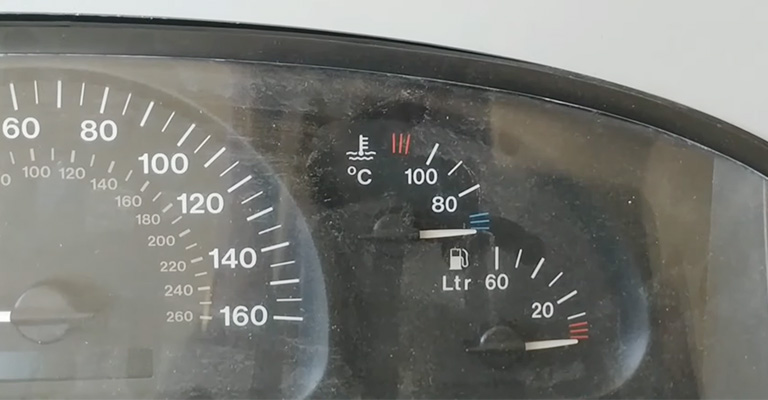
When the VTEC solenoid goes bad, that greatly decreases the fuel economy. This system is responsible for controlling the valve opening and closing timing.
And when the valve opens and closes at the right moment, that increases the fuel economy.
But if the VTEC solenoid has gone bad, that won’t be able to maintain that right timing, leading to a massive decrease in the fuel economy.
Poor fuel economy can also be a symptom of dirty fuel injectors, faulty sensors, low-quality oil, etc.
3. Increased Engine Temperature
Well, how much air will enter the intake manifold is controlled by the VTEC solenoid. And depending on the amount of air, the needed amount of fuel is delivered to the cylinders.
When the VTEC solenoid goes bad or malfunctions, it might not allow air to enter the intake manifold at all. In that case, the engine will get heated with a little acceleration.
Apart from that, lack of coolant, bad radiator, broken water pump, etc., also increases the engine temperature.
4. Sudden Power Loss
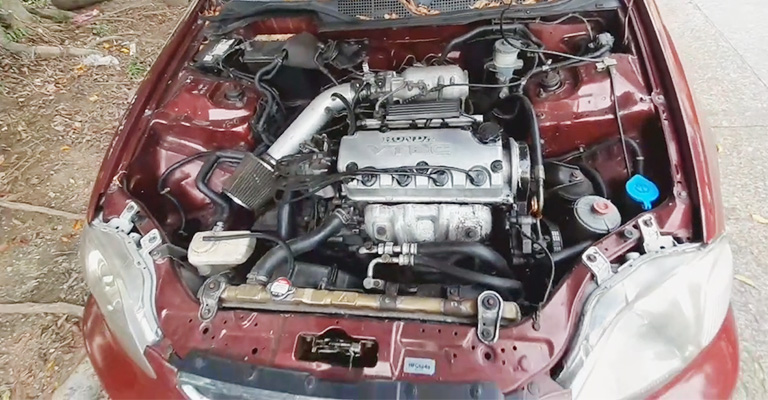
If your vehicle is losing power while driving, then it’s probably the bad VTEC solenoid. Though there are many other reasons behind a power loss, there is one way to be sure if the problem is due to a bad VTEC solenoid.
Check how the vehicle performs in non-VTEC mode; if it’s performing okay, then something is definitely wrong in the VTEC solenoid.
5. Oil Leak
If you notice oil on the ground where you’ve parked your vehicle, then the chances are high that there are oil leaks in your vehicle. And it’s a symptom of a bad VTEC solenoid.
There are rubber gaskets that seal the engine so that oil doesn’t come out. And with time, these rubbers shrink and get very hard, which leads to oil leaks.
6. Check the Engine Light
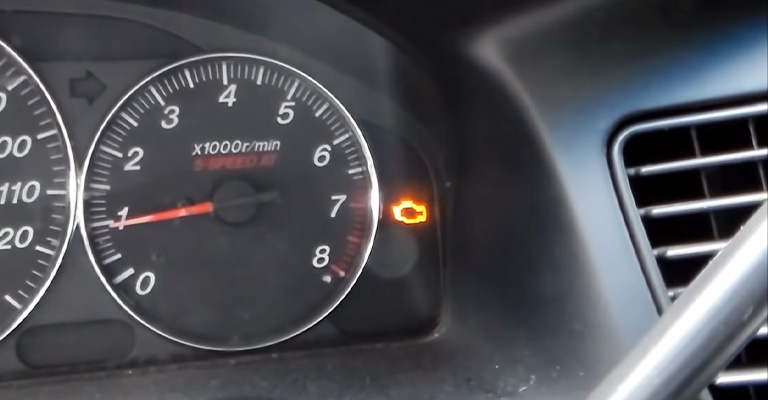
The engine check light will be turned on whenever something is wrong in your vehicle. Whether it’s a bad VTEC solenoid or a problem with the sensor, there are hundreds of reasons why the check light turns on. Therefore, it’s hard to find the reason behind that.
But if the engine check light is on, along with a few other symptoms, that makes finding the issue easy.
For example, if you see the engine check light on and the fuel economy has decreased, and the engine is losing power, chances are very high that the VTEC solenoid is to blame.
7. Engine Sputtering
When the engine can’t complete full combustion, that’s called sputtering, and it’s a sign that there is something wrong with the VTEC solenoid.
Some other common reasons for sputtering are bad fuel injectors, clogged air or fuel filter, imbalance in air and fuel ratio, etc.
8. Noisy Engine
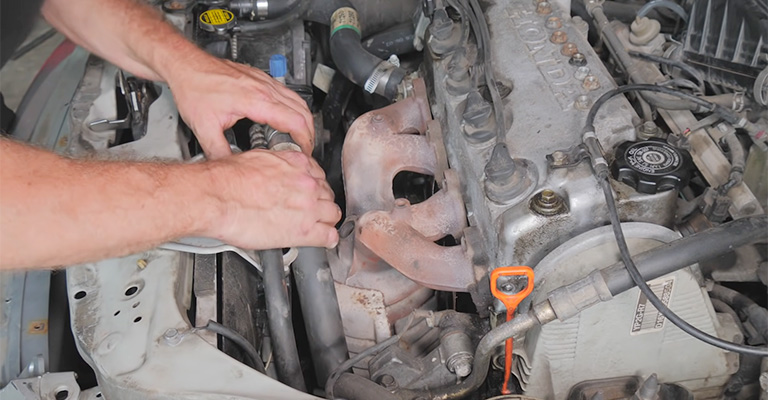
The VTEC solenoid makes sure the vehicle engine rev is at the limit, and when the system goes bad, it no longer controls the rev. And the engine starts to make loud noise during acceleration.
Therefore, if you notice the engine is making noise when idle or during acceleration, then it could be due to the bad VTEC solenoid.
9. Rough Start
If there is something wrong with the VTEC solenoid, the engine might struggle to start. Moreover, the engine might not start at all if the system has failed entirely.
What Causes VTEC Solenoid to Go Bad?
There are a bunch of factors that might cause the VTEC solenoid system to go bad; the following are the most common ones.
Low Oil Pressure
The VTEC solenoid requires good oil pressure to work properly, and when the pressure isn’t as high as the VTEC system requires, the system malfunctions. And slowly, that leads to more severe issues.
Low oil pressure has many reasons; the most common ones are a bad fuel pump, a clogged fuel filter, or unsuitable oil viscosity.
Moreover, the oil pressure gets high or low due to the VTEC oil pressure switch malfunctioning as well.
Fix: First, find out what’s causing the oil pressure to be low; if it’s due to a clogged oil filter, then changing the filter is a must.
Repair or replace the fuel pump depending on its condition, if needed. Whatever it is, find the problem and then take action accordingly.
Dirty Engine Oil
If you’re using low-quality engine oil, then that can be the factor slowly damaging the VTEC solenoid.
When there are impurities in the oil, it clogs the oil filter. Not only that, dirty oil can permanently damage the engine.
Fix: Once you’ve realized that the oil quality is poor, you should check the oil filter as well. If that seems clogged or very dirty, with oil, the filter should also be changed.
Short Circuit
When the wires and connectors get damaged, that can lead to short circuits, which might result in VTEC malfunction.
With time these wires and connectors get loose, which can cause some expensive damage to the vehicle. Therefore, make sure to do a visual inspection of the connectors and wires on a regular basis.
Fix: Change the wires if they’re damaged. If the connection is loose, then securely connect them.
Frequently Asked Questions
When the problem is in the VTEC solenoid, it is better not to drive in VTEC mode. Doing so might cause some permanent damages that can’t be repaired. Rather drive on non-VTEC mode and fix the issues as soon as possible.
A car won’t start without a solenoid if you try to start with the key. If you want to run the car without a solenoid, you’ll have to start the vehicle manually by using the battery and starter motor, which requires skill.
In the VTEC system, the power passes via the intake and exhaust valves, requiring less fuel. So, yes, the VTEC system saves fuel.
According to many experts, Honda VTEC engines can easily last for 200000 miles. And if the engine is well-maintained, then these engines can easily cross the 300000 miles mark.
Conclusion
So, these are the 9 symptoms of bad VTEC solenoids that you shouldn’t ignore at all. As mentioned before, the engine check light is a symptom of many problems.
Similarly, hard idling, power loss, and noisy engine, these symptoms individually can be due to some other vehicle issues.
But if you notice a couple of the mentioned symptoms simultaneously, it might be due to a malfunction in the VTEC system.

Leave a Reply